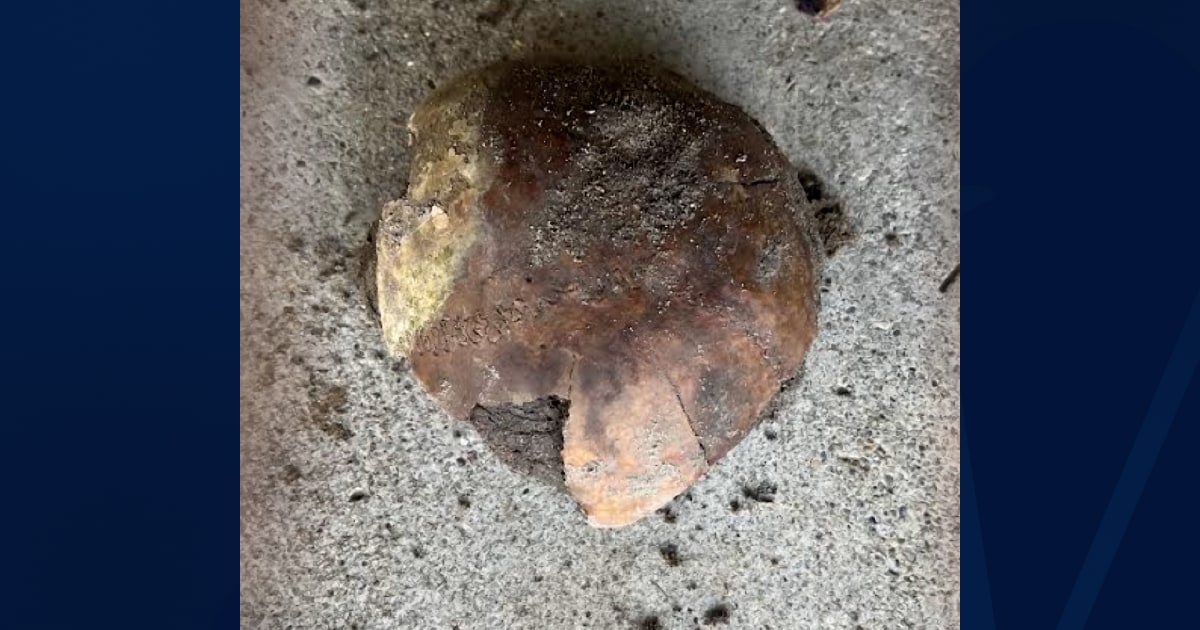FAYETTE COUNTY, Ind. — In a discovery that has captivated archaeologists and historians alike, a human skull unearthed along the eroding banks of Indiana's Whitewater River has been dated to approximately 4,270 years old, shedding new light on the region's ancient inhabitants.
The skull was found by a local resident walking along the riverbank in Fayette County, according to reports from WTHR, an NBC affiliate in Indianapolis. The discovery prompted an immediate investigation by local authorities and experts from the Indiana Department of Natural Resources, who worked to determine the age and significance of the find.
Officials said the skull was exposed due to natural erosion along the river's edge, a common occurrence in areas where fluctuating water levels and weather patterns gradually reveal buried artifacts. The Whitewater River, which flows through eastern Indiana and into Ohio, has long been a site of interest for its potential to yield prehistoric remains, given the area's rich geological history.
An investigation has determined that the human skull is more than 4,000 years old, as reported by WTHR's Ashton Hackman.
'An investigation has determined that a human skull found along the eroding banks of an Indiana river is more than 4,000 years old,' Hackman stated in his report for the station.
The precise dating was achieved through radiocarbon analysis conducted at a laboratory affiliated with the University of Indiana, sources familiar with the process said. This method measures the decay of carbon-14 isotopes in organic material, providing a reliable estimate of age. The skull's age places it in the Archaic period of North American prehistory, a time when indigenous peoples were transitioning from nomadic hunter-gatherer lifestyles to more settled communities.
Local historian Dr. Elena Ramirez, who was not directly involved in the investigation but has studied similar finds in the Midwest, provided context on the era. 'During the Archaic period, around 4,000 to 5,000 years ago, the people in this region were adapting to changing environments post-Ice Age,' Ramirez explained in an interview. 'They relied on the rivers for food, tools, and trade, so it's not surprising to find remains near water sources like the Whitewater.'
The discovery site is located near the town of Connersville, about 60 miles east of Indianapolis. According to county records, the area has seen increased erosion in recent years due to heavy rainfall and flooding events, which have accelerated the exposure of subsurface layers. Officials from the Fayette County Sheriff's Office were the first to respond after the finder reported the skull on October 15, 2023, initially treating it as a potential modern crime scene.
After forensic examination ruled out any recent foul play, the remains were transferred to state archaeologists. 'We always approach these finds with caution to ensure they're not connected to any ongoing investigations,' said Sheriff Deputy Mark Landon in a statement to local media. 'Once we confirmed its antiquity, it became a matter for historical preservation.'
The skull itself shows no signs of trauma, according to preliminary reports, suggesting it may have been part of a natural burial or ceremonial site washed away over millennia. Experts noted that the cranium is well-preserved, with intact facial bones and teeth that could provide insights into the diet and health of ancient populations. Dental analysis might reveal patterns of wear consistent with a diet heavy in grains and wild game, common in the Archaic era.
This isn't the first ancient artifact discovered along Indiana's rivers. In 2018, a similar find in the Wabash River yielded tools dating back 3,500 years, highlighting the state's underappreciated archaeological wealth. The Indiana Historical Society has documented over 200 prehistoric sites in the Whitewater Valley alone, many associated with the Adena culture, which flourished around 3,000 years ago.
Archaeologists are now planning a broader survey of the riverbank to search for additional remains or artifacts that might accompany the skull. 'Erosion can be both a curse and a blessing,' said state archaeologist Dr. Thomas Greene. 'It destroys sites but also reveals them. We're hopeful this could lead to a larger excavation.'
Community reactions have been mixed, with some residents expressing excitement over the historical significance and others concerned about potential disruptions to local recreation areas. 'It's amazing to think people were living here thousands of years ago,' said Connersville resident Sarah Jenkins, who lives near the discovery site. 'But I hope they don't close off the river trails for too long.'
The find also raises questions about land use and preservation in the face of climate change, which is exacerbating erosion in many Midwestern waterways. Environmental groups have pointed to this discovery as evidence of the need for better riverbank stabilization efforts to protect both natural habitats and cultural heritage.
As the investigation continues, experts anticipate that DNA analysis could provide clues about the skull's ethnic origins, potentially linking it to modern Native American tribes. The remains are being handled in accordance with federal laws like the Native American Graves Protection and Repatriation Act, ensuring respectful treatment and possible repatriation if tribal connections are established.
In the broader scope, this 4,270-year-old skull adds to the growing body of evidence that Indiana's landscape holds secrets from a distant past, inviting further research and public interest in the state's ancient history. Officials expect to release more details in the coming months as analyses progress.
